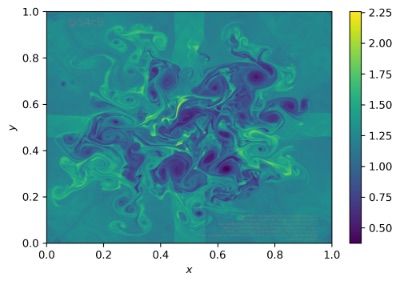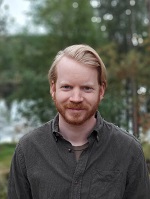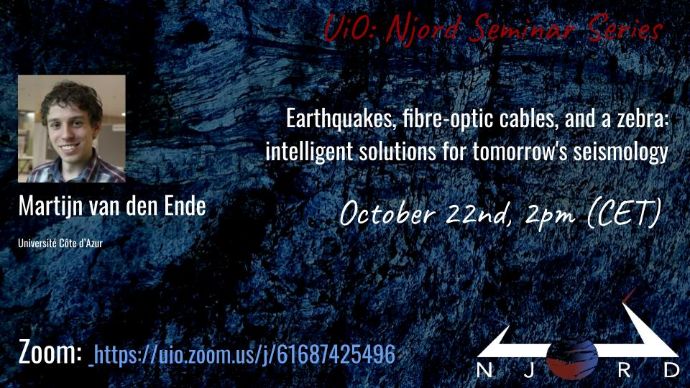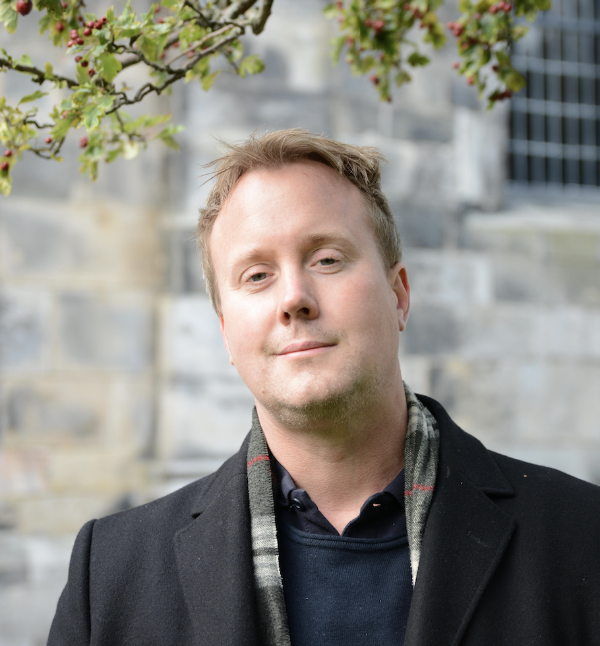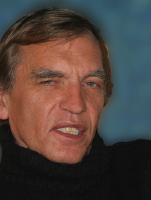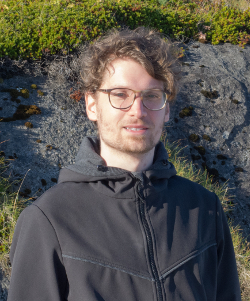Previous events - Page 94
BigInsight, SIRIUS, DataScience@UiO and the newly established dScience centre would like to welcome the data science community to an evening of socialisation, learning and entertainment after a long hiatus.
Every second Tuesday, CBA staff gather for lunch and a talk. On October 26th, it will be given by Ilaria Baneschi.
The PDE seminars for the Autumn of 2021 will be held every Tuesday from 10:15–12:00
Identification of the Active Transcription Factor Network in Osteosarcoma
PhD candidate William B. Reinar at the Department of Biosciences will be defending the thesis "Genomic short tandem repeats as modulators of gene expression and protein function" for the degree of PhD.
Professor Dan Crisan, Imperial College London, author of several books on filtering is now holding an intensive course.
Want to learn more about Open Access? Join the events organized by Norwegian institutions and organizations at Open Access Week.
Martijn van den Ende (Université Côte d'Azur): Earthquakes, fibre-optic cables, and a zebra: intelligent solutions for tomorrow's seismology
Welcome to our GEOHYD Lunch Seminar Friday 22th of October @ 12:15 in Aud. 2, Geology building or via videolink using Zoom. The seminar is helt by Tim van Emmerik, Wageningen University.
Welcome to our GEOHYD Lunch Seminar Friday 22th of October @ 12:15 in Aud. 2, Geology building or via videolink using Zoom. The seminar is helt by Tim van Emmerik, Wageningen University.
Abstract: Mixed-dimensional partial differential equations (PDEs) are equations coupling unknown fields defined over domains of differing topological dimensions. Such mixed-dimensional PDEs naturally arise in a wide range of fields including geology, biomedicine, and fracture mechanics. We introduce an automated framework dedicated to mixed-dimensional problems as part of the FEniCS library. This talk gives an overview of the abstractions and algorithms involved. The introduced tools will be illustrated by concrete examples of applications in biomedicine (see below for more detailed context).
This talk is part of the Mechanics Lunch Seminar series. Bring-your-own-lunch and lots of questions.
Oscar Agertz, Department of Astronomy and Theoretical Physics at Lund University, Sweden.
Hylleraas School 2021 will be held at Hotel Hadeland 17 - 22 Oct
by
Rebekka Steffen
From Geodesy at Lantmäteriet
Hosted by Maaike Weerdesteijn/Clint Conrad
Senior Engineer Sigrid Rønneberg, Justervesenet (The Norwegian Metrology Service)
Seeing With Sound - A Trans-Atlantic Study of the Mesopelagic Community
Coordinate targeting of ATF4 and XBP1 signaling inhibits prostate cancer cell proliferation
Velkommen til Geolearning Forum 2021. Konferansen vil i år bli avholdt 21-22 oktober på Leangkollen Hotel utenfor Oslo. Konferansen er fulltegnet!
Paneldebatt på Litteraturhuset i Trondheim.
October 20-21, CBA members will gather at Hotel Reenskaug in Drøbak to present their work and make new plans for the future.
The talk is elementary and discusses empirical modelling of single variables with insurance losses as example. There are in such cases little or no theory to go on, and the amount of data is many situation quite scarce. Why do we so often limit ourselves to fit two-parameter families? It will be suggested that it may be a good idea to work with more flexible models with three or four parameters and that this may provide a nice framework for automating the entire procedure for the computer to work alone. Sure, with little data the parameters may be unstably estimated, but that may not apply equally to the distributions they define. Many-parameter families suitable for insurance losses will be reviewed with some simple asymptotics in an example allowing this and with Monte Carlo to throw light on the issue in other cases.
In this talk I will discuss the variational form of Bayes theorem by Zellner (1988). This result is the rationale behind the variational (approximate) inference scheme, although it is not always that clear in modern presentations. I will discuss two applications of this results. First, I will show how to do a low-rank mean correction within the INLA framework (with amazing results), which is essential for the next generation of the R-INLA software currently in development. In the second one, I will introduce the Bayesian learning rule, which unify many machine-learning algorithms from fields such as optimization, deep learning, and graphical models. This includes classical algorithms such as ridge regression, Newton's method, and Kalman filter, as well as modern deep-learning algorithms such as stochastic-gradient descent, RMSprop, and Dropout.
The first part of the talk is based on our recent research at KAUST, while the second part is based upon \texttt{arxiv.org/abs/2107.04562} with Dr. Mohammad Emtiyaz Khan, RIKEN Center for AI Project, Tokyo.
Abstract: The concept of symmetry breaking is well-known in physics, for instance in condensed matter, where it results from interactions in a many-body system — e.g., phase transition in a spin system. Yet, as physicists, we tend not to think of the patterned structures seen in living, many-body systems in terms of broken symmetries. Whether it is the spacing of knuckles on our hand, the collective alignment of hairs on an insect wing, or more globally the transformation of a homogeneous, isotropic embryo into a developed organism, symmetry breaking abounds in biology. What new insights can a physicist bring to understand the origin of these complex phenomena? (Click title to read full abstract below...)
How did two physicists end up working at Norway’s largest bank? Milan completed his PhD in experimental physics at the University of Western Australia in 2007, while Vilde did her master degree in computational physics at the University of Oslo in 2018.
Hylleraas seminar, hosted in Oslo


